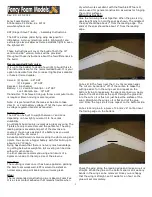
Vliegclub Schiphol
Version 0.7, March 2013
PH-TDS Procedures Quick Reference Guide Page
14
Go Around / Rejected Landing
•
NOTE:
Make a timely decision to discontinue an approach at any time a safe
landing is in question. This includes, being too high or low, too fast or slow, or
at any time when a landing cannot be made within the first third of the
runway.
1.
Gradually apply full power
2.
Adjust attitude to stop descent and begin a slightly positive rate of climb (200 –
300 fpm)
3.
Retract flaps to T/O
4.
Establish pitch attitude to achieve 66 KIAS
5.
Clear of obstacles
•
Pitch for 80 KIAS
•
Retract flaps to CRUISE
•
Make appropriate radio announcement
6.
Set climb power at 500’ AGL
7.
Maintain a straight track along runway centerline
•
If a go around is executed due to other departing traffic, climb to the right of
the departing aircraft (left, if right traffic pattern turns) until well clear and
communicate intentions.
Emergency Approach and Landing
1.
Convert excess speed to distance or altitude
2.
Establish best glide (73 KIAS)
3.
Trim
4.
Determine wind direction and land into the wind if possible
5.
Select a landing area within gliding range
6.
Develop an approach plan
7.
Turn towards to intended landing area
8.
If altitude is high spiral down over a key point abeam the landing site
9.
Time permitting, complete RESTART IN FLIGHT CHECKLIST
10.
Use flow pattern first, verifying with appropriate checklist
11.
If engine cannot be restarted, perform EMERGENCY LANDING
12.
Squawk 7700
13.
Announce position and intentions










































